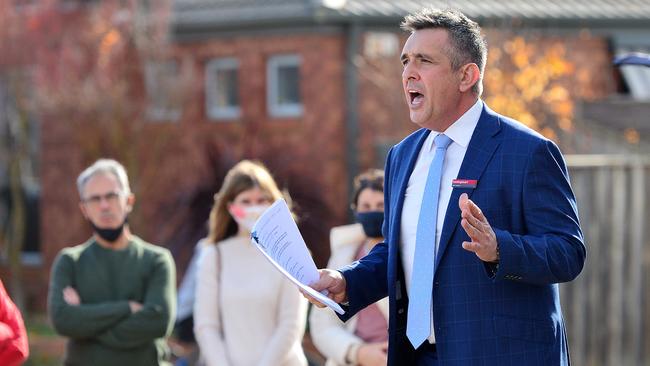Victorian tax grab sparks Melbourne home price slide
Investors in Melbourne are selling up at the highest rate of any of our capital cities to avoid hefty property taxes, with prices rising just 15.5pc since the start of the pandemic, compared to 75pc in other cities.

Investors in Melbourne are selling up at the highest rate of any of our major capital cities to avoid hefty property taxes, which has led to falling prices across the city.
In what was once the nation’s second-most expensive city, prices have risen just 15.5 per cent since the start of the pandemic.
Greater listings and less competition is the leading factor, with analysis from PropTrack revealing the investors represent two in five sales in Melbourne, the largest proportion in any state capital.
While cities experiencing significant price growth like Perth and Brisbane continue to see tight conditions, Melbourne has the highest number of homes for sale since November 2018.
New properties coming to market is 31 per cent above the prior five-year average.
Buyers advocate Cate Bakos said land tax was the “straw that broke the camel’s back … Investors are completely disincentivised. We’ve had rental reforms that are more onerous than any other state.
“We also had the burden of the eviction moratorium during our lockdowns, we were locked down for a long time, and the government basically left it to investors to work it out, meaning they were already out of pocket.
“Now the most recent and difficult challenge has been the land tax, which is a bit of a joke.”
Land tax increases were introduced in the Victorian government’s 2023-24 state budget designed to recoup the losses of the Covid-19 pandemic. Investors were targeted as one of the groups “most able to pay”, which Real Estate Institute of Victoria president Jacob Caine said was a “fallacy”.
“There’s an implicit assumption … that investors are rich and unarguably, that’s a fallacy,” he said. “The data shows that 90 per cent of rental properties around the country are provided by these private investors … and sit about the median income.”
Separately, new minimum standards are expected to cost landlords at least $5000 in upgrades, which Mr Caine said would further compound the pressures and force investors out of the market.
In August, Melbourne prices slipped 0.18 per cent, culminating in 4.66 per cent falls since the highs of March 2022. Sydney prices inched up 0.32 per cent, while Perth recorded the largest gain, up 0.79 per cent.
Hobart grew 0.63 per cent, Adelaide (up 0.45 per cent), Brisbane (up 0.35 per cent), Darwin (up 0.37 per cent) and Canberra (0.04 per cent)
PropTrack senior economist Eleanor Creagh said investors were not only selling, they were also failing to buy into the market
“Price momentum is weaker in Melbourne as buyers have consistently enjoyed more choice over the past year relative to other markets,” Ms Creagh said.
“At the same time, construction rates relative to population growth in Victoria have been somewhat balanced compared to other parts of the country. Victoria is also not attracting the same uplift in investor activity as other states as a result.”
Melbourne started the year as Australia’s second-most expensive city. But continued strong price growth in the smaller markets of Brisbane, Adelaide and Perth has seen the nation’s second largest city drop down the rankings. It is the third most affordable now that prices have come back 4.6 per cent over the past year.
Ms Bakos said many investors were now looking to the sharemarket to park their cash, as it had fewer restrictions. She added that while first-home buyers were better positioned to enter now that prices had stabilised, they were competing to buy the homes investors were selling, with tree-changers returning to the city post-pandemic.
SQM research managing director Louis Christopher said he believed local investors would not be the only ones affected.
“While we have this rather adverse taxation regime for investors in Victoria, they’ll be an incentive for investors … to look in other states,” he said.




To join the conversation, please log in. Don't have an account? Register
Join the conversation, you are commenting as Logout